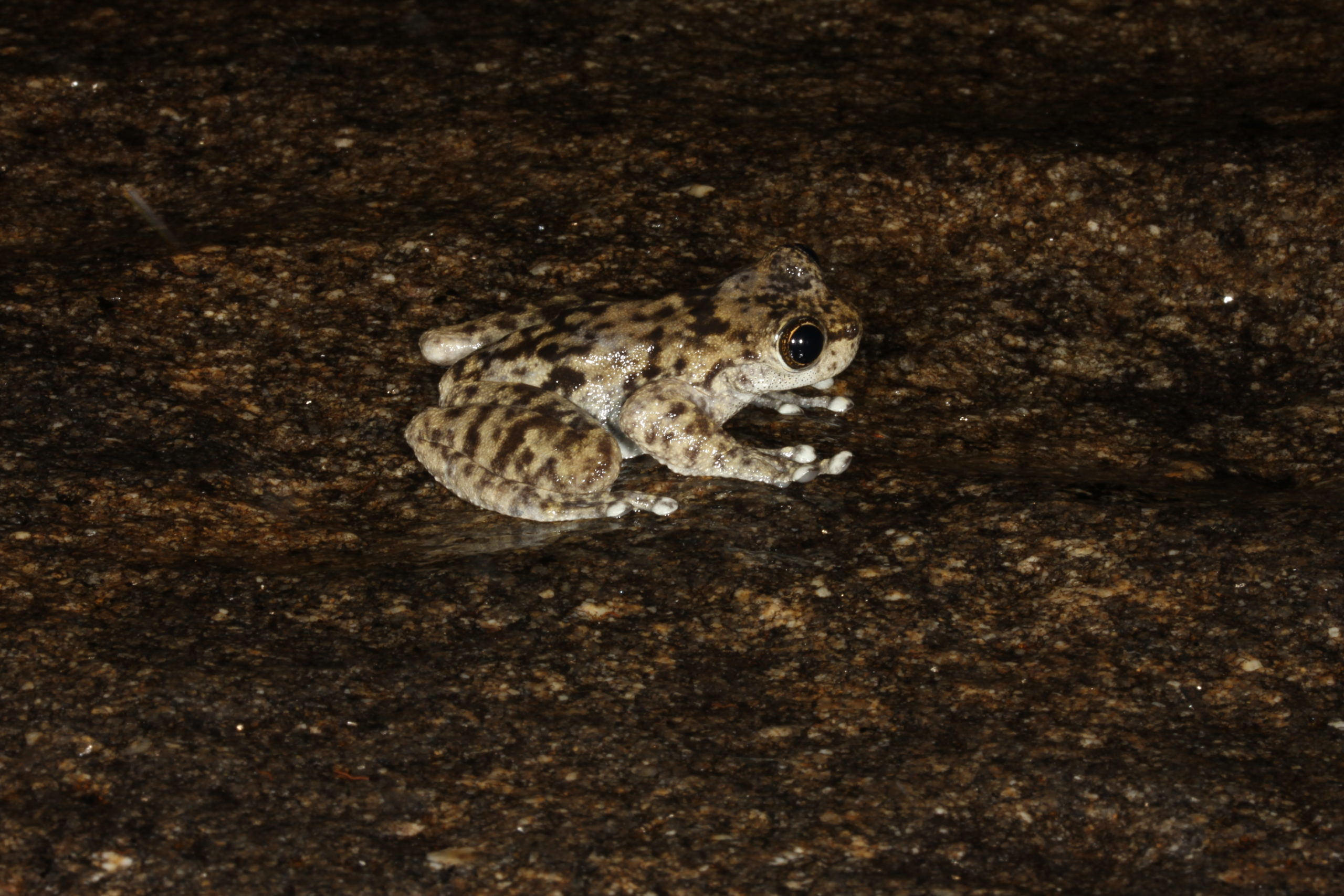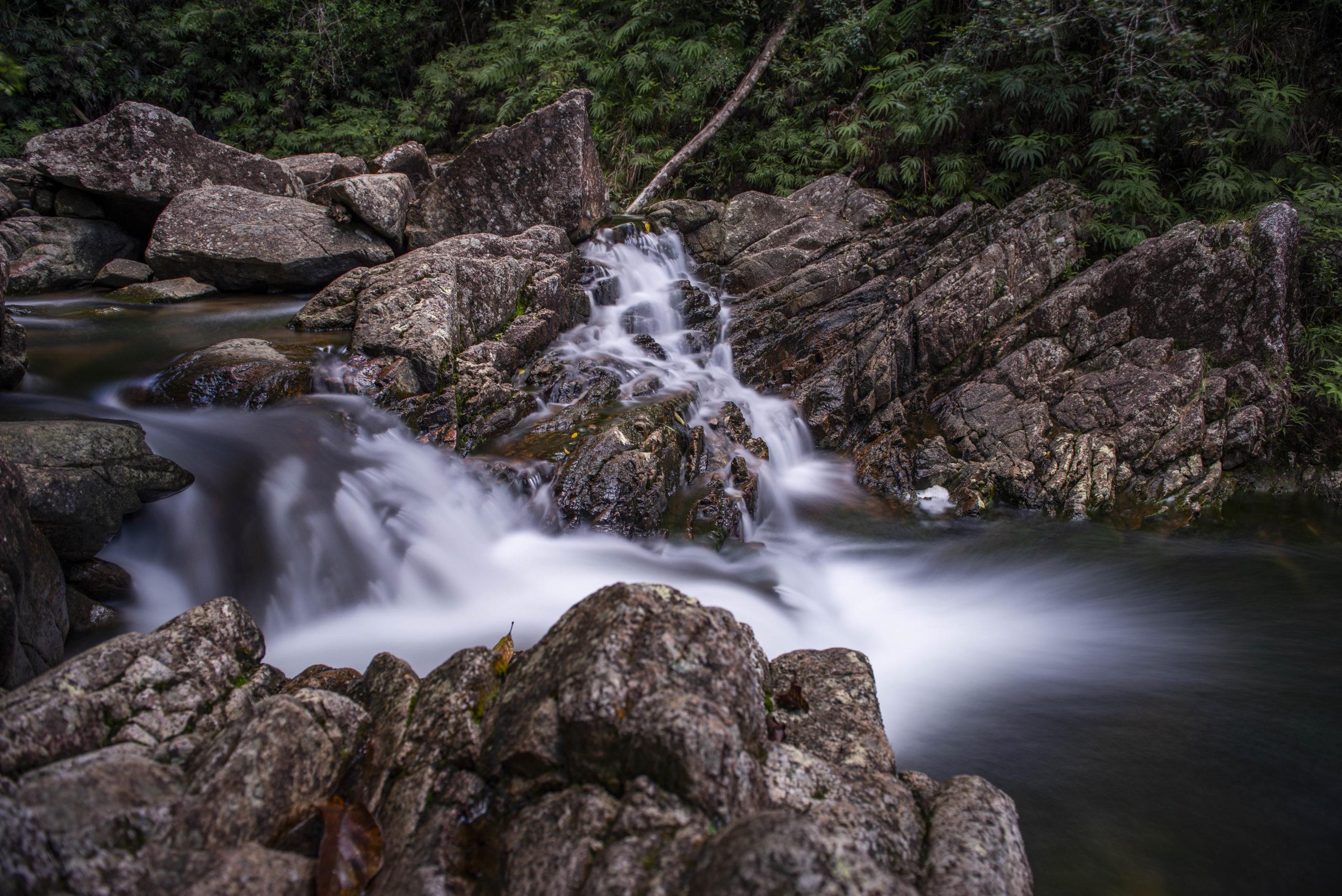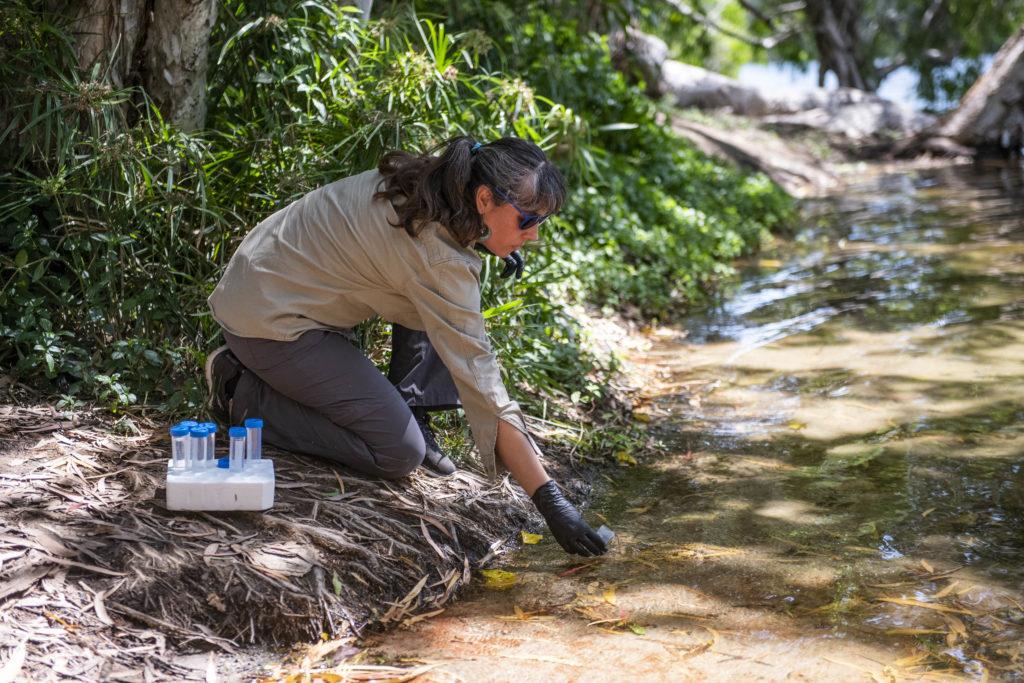27 September 2021
Scientists are using an innovative technique to detect endangered frogs a long way downstream from their mountainous, tropical homes in the Wet Tropics of north Queensland.
Researchers from James Cook University have refined environmental DNA (eDNA) methods to detect a small population (only 1,000 individuals) of a critically endangered frog up to 20 kilometres downstream.
Read more from Minister Sussan Ley.

The critically endangered armoured mistfrog is found only in Queensland’s Wet Tropics. Photo: Conrad Hoskin.
eDNA is any trace DNA that animals leave in the environment, which can be through urine, blood, saliva, faeces and other secretions.
Dr Cecilia Villacorta-Rath, who co-led this study funded by the Northern Australia Environmental Resources Hub of the Australian Government’s National Environmental Science Program, said the eDNA test could help protect increasingly threatened stream frog species.
Frogs are facing increasing pressure from reduced habitat availability and diseases such as chytrid fungus, which disproportionately affects stream-associated species.
– Dr Cecilia Villacorta-Rath, study co-lead, James Cook University
Before the effects of chytrid fungus, tropical rainforests were a haven for frogs such as armoured mistfrogs, waterfall frogs and lace-lid frogs (Litoria lorica, L. nannotis and L. dayi). The often mountainous and remote habitats provided refuges for frogs but made sampling with traditional methods quite difficult.

The streams and waterfalls of Queensland’s Wet Tropics were once a haven for frogs before the introduction of chytrid fungus disease. Photo: Northern Australia Environmental Resources Hub
Traditional frog survey methods involve walking along streams at night, using head torches to find frogs directly, or from eye-shine.
In mountainous habitats, there’s even more difficulty due to how many small tributaries there are to search. Finding small populations is truly a needle in a haystack-type challenge.
– Dr Conrad Hoskin, study co-lead, James Cook University
These difficult conditions are an ideal opportunity to use eDNA to find these frogs. Although there are many tributaries and streams, there are often only a few major drainages that can be sampled, and give information about what frogs might be present upstream.
Filtering water samples on-site has previously been considered the best-practice approach for finding the eDNA of rare aquatic species. However, the research team successfully detected eDNA in small bottles of unfiltered water after centrifuging samples back in the laboratory.

Dr Cecilia Villacorta-Rath taking a water sample for eDNA analysis. Photo: Northern Australia Environmental Resources Hub.
The success of collecting eDNA from unfiltered water samples is particularly encouraging for detecting small populations of species. Collecting a small amount of water in plastic tubes or bottles is far more practical than filtering water through heavy equipment on precarious stream banks in remote mountain areas.
Not only did the researchers find that they could detect the eDNA of endangered frogs in small bottles of unfiltered water, but they also discovered they could do it from sites that were more than 20km downstream from where they knew the frogs were living.
The results of this research indicate that this technique could be used to search for ‘missing’ populations in places where traditional survey methods have not been able to detect species.
However, researchers caution that while finding threatened populations is an important first step in protecting frogs, issues such as habitat loss and climate change need to be managed to ensure conservation success.
Knowing where the frogs are is critical, because then we know the areas where conservation efforts need to be focussed to protect them for the long term.
– Dr Conrad Hoskin
The study, Long distance (> 20 km) downstream detection of endangered stream frogs suggests an important role for eDNA in surveying for remnant amphibian populations was published in the journal PeerJ and authored by Cecilia Villacorta-Rath, Conrad Hoskin, Jan Strugnell and Damien Burrows.
Want to know more about the Resilient Landscapes Hub's activities and our research into practical solutions to environmental problems? Stay informed about activities, research, publications, events and more through the Hub newsletter.